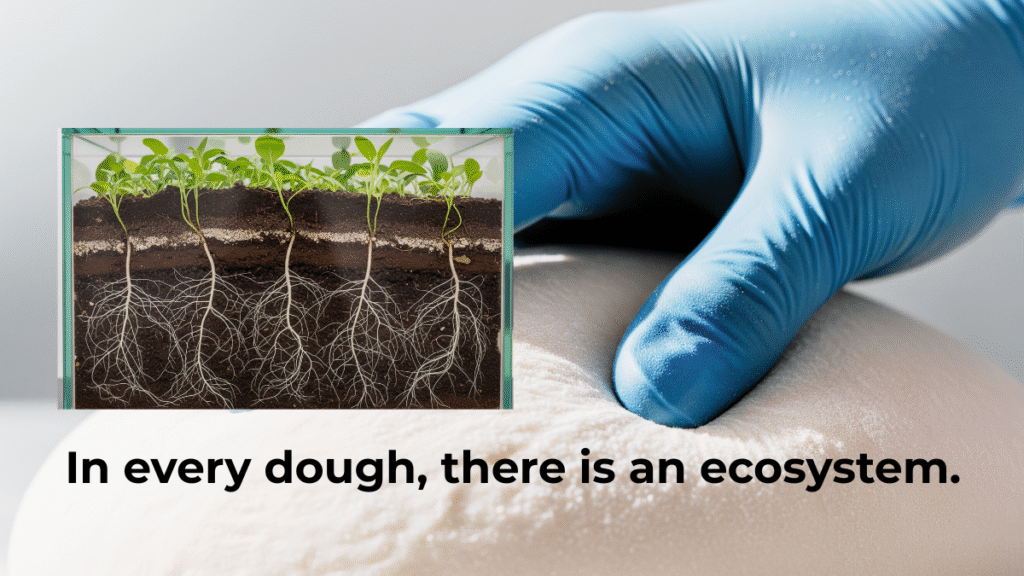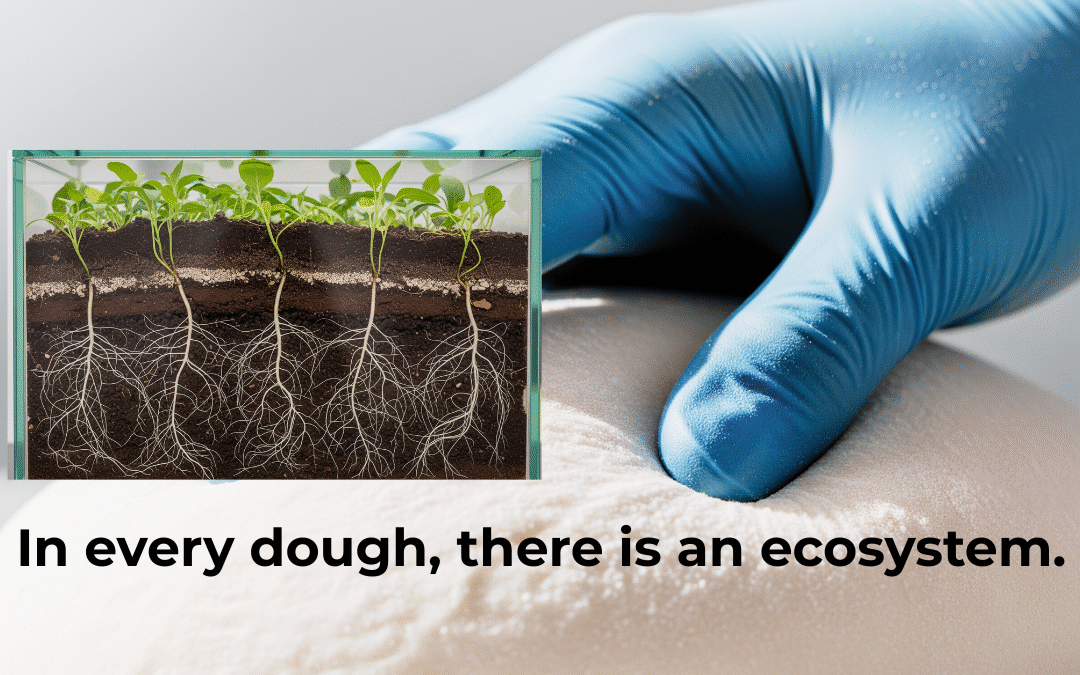
The network of yeasts and bacteria inside our dough is a living terroir that we, as bakers, have the duty to cultivate.
Understanding the critical role of Lactobacillus in sourdough is the first step to mastering artisan baking. I know this because there’s an episode from my professional journey that forever changed my approach to living matter. Back then, I was obsessed with technique, with the search for a near-mathematical perfection in crumb structure and oven spring. One day, after countless attempts, I achieved what on paper was the perfect loaf. Flawless. And yet, upon tasting it, I felt a profound disappointment. It was a bread without a soul.
In that moment, I didn’t see a baked good, but a suffering ecosystem. I had built a magnificent structure, but I had neglected the teeming life that should have inhabited it and given it a terroir. That fundamental lesson, learned through a youthful failure, became the pillar of my work and my philosophy.
And that is why today we are putting under the lens not just an ingredient, but the invisible custodians of that soul: the Lactobacillus bacteria.

A microscopic view of Lactobacillus, the Lactic Acid Bacteria (LAB) that are the protagonists of our dough’s fermentation.
Identity Card: Lactobacillus (LAB)
- Who they are: The acronym LAB stands for Lactic Acid Bacteria, a vast family of bacteria. They are prokaryotic microorganisms, a much older and simpler form of life compared to yeasts (like Saccharomyces), which are eukaryotic. The complex and wonderful symbiosis of these yeasts and bacteria is the foundation of Lactobacillus in sourdough.
- What they do: Their primary function is lactic fermentation. They feed on the sugars present in the flour and, unlike yeasts whose main products are alcohol and carbon dioxide, lactobacilli primarily produce lactic acid and acetic acid. These two acids are the cornerstones of the flavor profile in naturally leavened bread.
The Scientific Role of Lactobacillus in Sourdough
If our dough is a micro-ecosystem, then different microorganisms play complementary roles, just as in nature. Understanding the specific function of Lactobacillus in sourdough is crucial for any baker.
1. They Define the Flavor of the Terroir
Lactic acid provides sweet, round aromatic notes, reminiscent of yogurt and cream. Acetic acid, on the other hand, is more volatile and pungent, like vinegar. The artisan-custodian’s skill lies in guiding the conditions (temperature and hydration) to favor one acid over the other, thus defining the aromatic identity and the characteristic sourdough flavor.
2. They Improve Dough Structure
The controlled acidification of the dough has a positive effect on the gluten network, strengthening it and increasing its extensibility. A properly acidified dough is tougher and performs better. This effect on structure is a key benefit of working with Lactobacillus in sourdough.
3. They Protect the Ecosystem (Shelf Life)
The acidic environment created by lactobacilli is a powerful natural preservative. It inhibits the growth of molds and pathogenic bacteria, including the dreaded Bacillus subtilis responsible for “ropy” bread. This ensures the final product has a longer shelf-life naturally.
Balancing Lactobacillus in Sourdough: Light & Shadow
Like any powerful element in nature, the work of lactobacilli is a matter of delicate balance.
LIGHT ☀️: Well-managed lactic activity leads to a product with a complex and unique aromatic profile, improved digestibility thanks to the pre-digestion of starches, and superior shelf life. It is the artisan’s signature.
SHADOW 🌑: Herein lies the custodian’s frustration. An imbalance in the ecosystem, often caused by incorrect management temperatures or excessively long fermentation times, leads to an overproduction of acids. Excessive acidity not only produces a sour and unpleasant taste but also begins to degrade the gluten network. The proteolytic action of enzymes, accelerated by excess acid, transforms a strong, elastic dough into a sticky, unmanageable mass. This is the moment our ecosystem stops thriving and begins to collapse.
Expert Advice for Managing Lactobacillus in Sourdough
The biggest mistake we can make is to treat our sourdough starter like a recipe ingredient. It is not. It is a living ecosystem that we must learn to listen to.
My advice is this: develop your “ecologist’s” sensitivity. Don’t blindly trust a timer or the rise in volume (which is mainly the work of saccharomyces). Use all your senses to read the health of your terroir.
- Smell it: Are the notes sweet and milky, or are they turning towards a pungent, aggressive vinegar?
- Observe it: Is it lively and dome-shaped, or does it look gray and “tired”?
- Touch it (during mixing): Is it strong, silky, and elastic, or is it becoming sticky and weak?
Learning to interpret these signals is more important than any recipe. It means moving from being simple executors to becoming true custodians of taste and life.
Katia Oldani, Biologist Pastry Chef
Visita il mio Canale YouTube per video e approfondimenti.
Per qualsiasi informazione o contatto, clicca qui.


